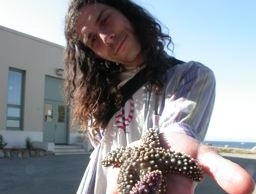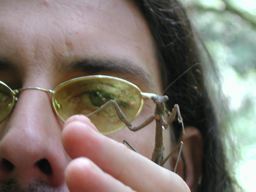

Research
Jason Hodin
click here for a list of my publications
BREEDING AN ENDANGERED SEASTAR...In 2013 a calamitous syndrome known as Sea Star Wasting Disease, or Sea Star Wasting (SSW) swept across the NE Pacific and impacted every known seastar in the region. As such, it was unprecedented in both its taxonomic and geographic scope. Of all of the impacted species of stars from SSW, sunflower stars (Pycnopodia helianthoides) were the most severely affected, and they now have the unfortuante distincition of being the first ever seastar to be listed as endangered on the IUCN RedList. Its disappearance has seemed to come with severe ecological consequences: in Northern California, populations of one of its prey —the kelp eating purple urchin Strongylocentrotus purpuratus— have exploded, and bull kelp forests have crashed. Since 2019, our lab has been engaged in a captive rearing effort for this species (funded primarily by The Nature Conservancy of California) with the dual goals of uncovering important life history information, particularly on poorly studied juvenile stages, and raising them from egg to juvenile for possible release into the wild.
 You can donate to our sunflower star captive rearing effort at the UW Giving campaign Stars for the Sea
You can donate to our sunflower star captive rearing effort at the UW Giving campaign Stars for the Sea
METAMORPHOSIS...fascinates me. My PhD work focused on how alternative reproductive strategies in insects have evolved via alterations in reproductive development during metamorphosis. Since graduate school, I have examined metamorphosis in echinoderms (sea urchins, sea stars, brittle stars and their kin). Along with my collaborator Andreas Heyland, I have been characterizing echinoderm metamorphosis and studying the involvement of thyroid hormone, which represents an apparent example of parallel evolutionary acquistion of a metamorphic hormone.
SETTLEMENT...is the shift in habitat of a larva floating in the plankton to a juvenile on the sea shore. In particular, I have an ongoing collaboration with Matt Ferner and Brian Gaylord, looking at how exposure to near-shore, high-energy turbulence and other possible "neighborhood-scale" cues can signal to larvae that they are approaching suitable settlement habitat.
--click here for a list of my publications--
email: larvador(at)uw.edu
snail mail: Friday Harbor Labs, 620 University Rd., Friday Harbor, WA USA 98250
